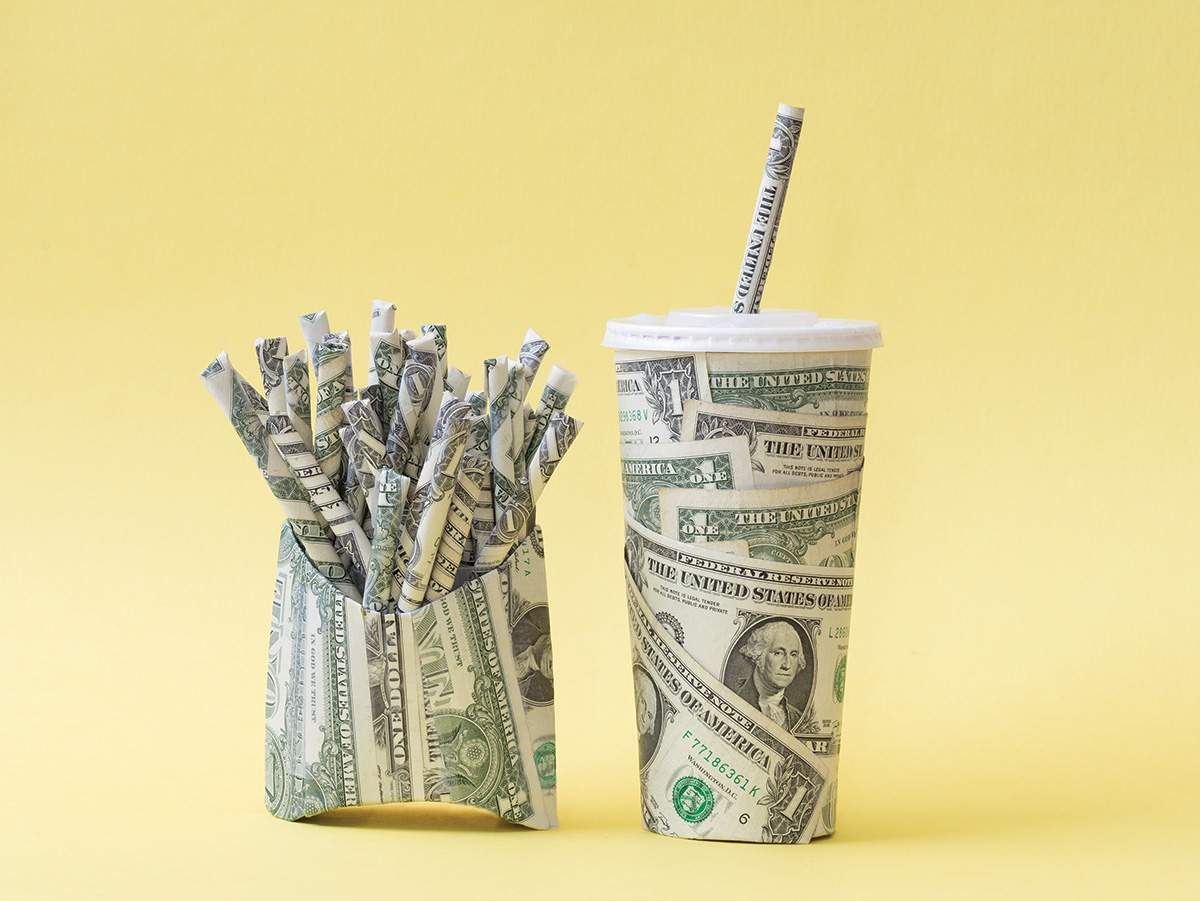The price gap between real, healthy food and fake food with lower nutritional value needs to shrink. Food marketers are fooling people into thinking they’re getting bargains when they go out for a fast food meal or buy sugary cereal that is marked down. If you actually buy fresh food, and take a little bit of time to prepare it, the cost will almost always be lower than feeding your family at a fast food restaurant. (I know. It can be tough to find the time when two working parents come home tired, but there are lots of cookbooks devoted to quick, simple, healthy meals.) To a certain extent, we pay for convenience at the cost of our health. But is it more convenient if we have to give children insulin shots every day? Is it more convenient to end up with a generation that is the first to live shorter lives than their parents? Is it more convenient if young people need more health care when they reach their productive working years?
Fruits and vegetables have also become more expensive for everyone over the years, because our subsidy system puts a little too much emphasis on grain production and provides little assistance to specialty crop farmers. (Including fruits and vegetables under crop insurance in the most recent farm bill is a step in the right direction.) Marion Nestle notes in her Food Politics blog: “The Department of Commerce reports that the indexed price of fresh fruits and vegetables has increased by 40% since 1980, whereas the indexed price of sodas has declined by about 30%. Fast food, snacks, and sodas are cheap. Fruits and vegetables are not. Without access to healthful foods, people cannot eat healthfully.”
Price discrepancies build favoritism toward bad, cheap food—the kind you see heavily advertised in grocery store flyers. That’s just considering the cost of fruits and vegetables grown by conventional methods. As is well-known, the costs of organic fruits and vegetables (and those that are organic for all intents and purposes but without the certification) tend to be much higher today.
The Maine Organic Farmers and Gardeners Association did find that prices for produce at farmers markets tended to be lower, given the economies of direct selling (organic lettuce sold for 18% less than organic lettuce in the supermarket, for example). Nevertheless, if this is the kind of food we want to promote for our own health and the health of the planet, the cost is still too high.
• • •
Costs and Access
It’s also the case that while our fruits and vegetables have been going up in price, they have been decreasing in nutritional quality due to depletion of soil quality from high-intensity agriculture methods—which emphasize quantity over quality—according to several authorities both here and in the United Kingdom. In its EarthTalk blog, Scientific American estimated that to get the same amount of vitamin A our grandparents derived from one orange, we would need to eat eight.
To get the same amount of vitamin A our grandparents derived from one orange, we would need to eat eight. —EarthTalk, Scientific American
We are paying more money for less nutrition. It would be easy to think that city dwellers are the only ones who experience high prices and availability problems for fresh food, since rural people are closer to the source, but that is sadly not true. There are many “rural food deserts,” where all residents live more than ten miles from a supermarket or supercenter. A nationwide analysis found that there are 418 rural food desert counties—20% of all rural counties in the US. In Mississippi, the state with the highest obesity rate in the country (35.4% of adults), over 70% of households eligible to use food stamps travel more than 30 miles to reach a supermarket. The lack of supermarkets and access to fresh food correspond to the likelihood of fresh food consumption. In rural Mississippi, residents in food desert counties are 23% less likely to consume the recommended fruits and vegetables than those in counties that have supermarkets.
There are larger implications from the lack of access to healthy food. Residents in areas without access to good food have poor physical and economic health, due to costs in obtaining food (transportation) and the costs associated with poor health. Local businesses suffer due to an unhealthy workforce, and state and local governments face increasing health care costs and the loss of tax revenues when residents leave a jurisdiction to purchase food. According to the University of North Carolina, rural food deserts will increase as rural populations decline, and the food industry continues to shift distribution to larger superstores in higher population areas. Just another of the many reasons we need to change this food system now. What we’re doing today is just not fair. Healthy food is essential for “life, liberty, and the pursuit of happiness,” and our food system is just not delivering it to all of its citizens. •








